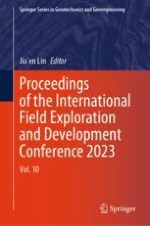2024 | OriginalPaper | Buchkapitel
Production Optimization of Chemical Flooding Based on Reservoir Engineering Method
verfasst von : Zhi-bin An, Kang Zhou, Jian Hou, De-jun Wu
Erschienen in: Proceedings of the International Field Exploration and Development Conference 2023
Verlag: Springer Nature Singapore
Aktivieren Sie unsere intelligente Suche, um passende Fachinhalte oder Patente zu finden.
Wählen Sie Textabschnitte aus um mit Künstlicher Intelligenz passenden Patente zu finden. powered by
Markieren Sie Textabschnitte, um KI-gestützt weitere passende Inhalte zu finden. powered by
